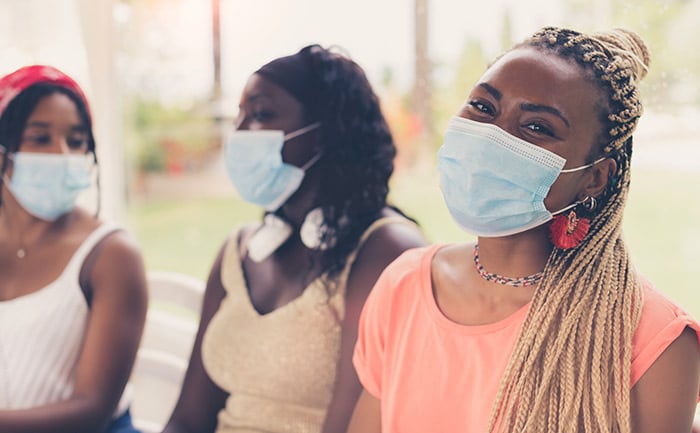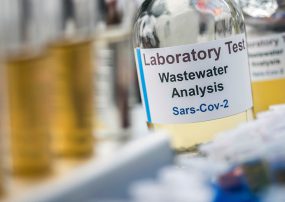Environmental Health Strategies to Reduce COVID-19
Focusing on Disproportionately Affected Communities

Health and social inequities put many people from racial and ethnic minority groups and people with lower incomes at increased risk of getting sick and dying from COVID-19. Our Environmental Health Capacity project helps states use environmental health strategies to stop the spread of COVID-19 in communities disproportionately affected by the disease.
This project, funded in fiscal year 2021, focuses on strategies that state-based environmental health (EH) programs can use to support disproportionately affected communities. Three state health departments (Kentucky, Massachusetts, and Washington) received CDC funding to
- Address EH hazards to prevent the spread of COVID-19; and
- Enhance EH services to prevent environmental transmission of COVID-19.
Collectively, this work will help CDC and state-based environmental health programs learn whether EH strategies can reduce the impact of COVID-19, particularly in certain groups more affected because of health and social inequities.

The health department in Kentucky is conducting wastewater testing and environmental assessments in communities disproportionately affected by COVID-19. Local health departments can use these data to promptly identify COVID-19 clusters. This project aims to prevent further transmission of COVID-19 among disproportionately affected racial and ethnic minority groups, rural communities, and people who lack secure housing. Unlike other types of COVID-19 surveillance, wastewater surveillance does not depend on people having access to health care, people seeking health care when sick, or availability of COVID-19 testing. Because wastewater surveillance can capture the presence of the virus that causes COVID-19 shed by people with and without symptoms, it can serve as an early warning that COVID-19 is spreading in a community. In addition to wastewater surveillance data, the health department also plans to use environmental tracking data and sampling to address the disproportionate burden of environmental health hazards in these communities.
The health department in Massachusetts is exploring the impact of COVID-19 and social vulnerability in environmental justice communities, including neighborhoods with low incomes, high rates of racial and ethnic minorities, and high rates of residents who don’t speak English fluently. Many communities that have been disproportionately affected by COVID-19 are often also at higher risk for diseases with potential environmental links, such as childhood asthma, elevated child blood lead levels, low birth weight, and heart attacks. The health department is exploring strategies such as creating culturally appropriate guidance for preventing environmental exposures underlying these conditions to improve overall health outcomes and decrease the effect of COVID-19 in these communities.
The health department in Washington is helping homeless shelters, long-term care facilities, schools, and other facilities expand their ongoing COVID-19 ventilation practices to address exposures from heat and smoke. The project focuses on facilities that serve people affected by health and social inequities that are at a higher risk of COVID-19. They are collecting information from facilities to learn about their current ventilation practices and barriers to improving indoor air quality. The project will also provide educational resources for facility managers on indoor air quality and ventilation to address COVID-19 transmission, extreme heat, and wildfire smoke. Exposure to extreme heat and wildfire smoke along with living in congregate settings can make people more prone to a range of infectious diseases, including COVID-19, respiratory illnesses, heart and lung diseases, and death.
These projects are in the early phases, and results should begin to be evident by 2024. These three sites also participate in other projects as part of our Environmental Health Capacity program. Through this program, CDC is working closely with these and other funded recipients to identify best practices that can be shared with other funded and unfunded state, tribal, local, and territorial environmental health programs.